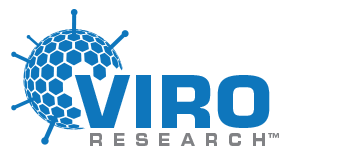INTRODUCTION: Herpes zoster (HZ) is caused by the reactivation of the varicella-zoster virus (VZV) which leads to the development of a painful, vesicular rash and can cause complications such as postherpetic neuralgia (PHN) and vision loss. HZ is increasing globally, costing billions annually to the healthcare system and to society through loss of productivity. HZ has become a preventable disease with the advent of effective vaccines such as the live attenuated vaccine (Zostavax in 2006) and with the adjuvant recombinant subunit vaccine (Shingrix in 2017). The review by Pan et al.1, discusses the currently available HZ vaccines, along with the vaccine guidelines and the economic burden of HZ in countries, as well as barriers/considerations in HZ vaccine access on a global scale.
DISCUSSION: A large scale, randomized, double-blind, placebo-controlled trial for Zostavax with 38,546 adults over the age of 60 found that the incidence of HZ was reduced by 51%, and that of postherpetic neuralgia (PHN) was reduced by 66.5%. In those over 70, Zostavax reduced HZ by 37.6%. A similar trial with 15,411 people over the age of 50 with Shingrix, reduced the incidence of HZ by 97.2%, and for those over age of 70, HZ was reduced by 91.3%. PHN was reduced by 88.8%. In terms of the duration of vaccine efficacy, the finding of others (Bastidas et al.2) showed that Shingrix demonstrated superior efficacy (both short term and long term) over Zostavax. Studies have also shown (Curran et al.3 that when compared to Zostavax, the Shingrix vaccine is significantly more cost effective at all age groups, preventing an additional 71,638 cases of HZ, 6403 cases of PHN, and 10,582 cases of other complications in their model. Shingrix would enable approximate savings of $218 million in direct costs and $71 million in indirect costs for the cohort of 1 million individuals studied. Around the World, just under 70 countries are using Zostavax, and just under 40 countries are using Shingrix. Several countries have found that Shingrix is more cost effective, leading to implementation of HZ vaccination in countries where is was previously not recommended (e.g. China and Germany).
CONCLUSION: The availability of the Shingrix vaccine in 2017 has proven to be more cost effective and safer in immunocompromised patients and has become the vaccine of choice in multiple countries, included, but not limited to the United States, Canada, China, and Germany.
REFERENCES:
- Pan, C.X., M.S. Lee, and V.E. Nambudiri. (2022) Global herpes zoster incidence, burden of disease, and vaccine availability: A narrative review. Therapeutic Advances in Vaccines and Immunotherapy. 10; 1-19. https://doi.org/10.1177/25151355221084535
- Bastidas, A., Catteau G., Volpe S. et al. (2019). Long-term Immunological Persistence of the Adjuvanted Recombinant Zoster Vaccine: Clinical Data and Mathematical Modeling. Open Forum Infect. Dis. Oct; 6(Suppl 2): S84–S85. Https://doi.org/10.1093/ofid/ofz359.183
- Curran D., Patterson B., Varghese L., et al. (2018) Cost-effectiveness of an adjuvanted recombinant zoster vaccine in older adults in the United States. Vaccine Aug 9;36:5037-5045 https://doi.org/10.1016/j.vaccine.2018.07.005



